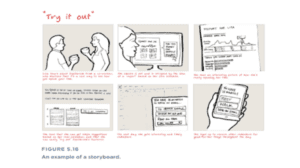You’re redesigning your website, or building a new site from the ground up. The budget’s been secured, the timeline established, and the resources booked. Before even starting the project, you already have ideas of what the site should look like, say, and do. Once people reach this point, they’re usually ready to dive in and start building something. And usually the first thing they need to do is the last thing they want to do: wait.
Waiting doesn’t mean sitting back and doing nothing. Waiting means gathering data. Waiting means conducting research. And waiting means analyzing the findings to determine your overall website strategy—the information architecture, site map, and, ultimately, wireframes. Taking the time to do your due diligence at the beginning of your website project ensures that the basis for your entire web design is built on data and facts. Just as you wouldn’t build a house on an unstable foundation, you shouldn’t build your website on incomplete or unverified information.
All of this work falls under the umbrella of user experience (UX) design. When people hear the term UX, they frequently think of wireframes—and not much else. UX design isn’t only creating pages of neat boxes and placeholder copy for visual designers to make pretty. This is the stage to conduct the discovery work and develop the strategic insight to translate that research into the bones of the website.
Doing the Research
There are many types of UX research to utilize when tackling a website redesign. Each site and business is different, so the methods used will vary based on your company’s business needs and goals, as well as the realities of any time and budget constraints. Some methods used:
Any existing data, like analytics or heatmaps, will also be included in this research.
Not all of the above methods are always needed, but one piece you don’t want to skip is user interviews. Speaking with real users provides invaluable insight into their needs, goals, and pain points, as well as any other information that may come up during a one-on-one interview. These discussions also help clarify and validate—or invalidate—any assumptions and potential biases that UX designers and stakeholders may have about their users’ habits and motivations.

The output of this research can take many forms and is largely dependent on the information gathered. Knowing your audience (i.e., stakeholders) can also influence how UX research is presented in order to get internal buy-in. If your main stakeholder responds well to visuals and empathy, leading with a storyboard or journey map could be an effective approach.
On the flip side, if your team is more comfortable using hard data to make decisions, first presenting a quantitative analysis of your user testing results might be more effective.
Other methods include:
Using the research
After conducting and analyzing all that UX research, sometimes people fall into a common trap: ignoring the research findings. There are many reasons this could happen. A company may accelerate the project timeline to take advantage of a business opportunity, or it could move resources elsewhere and decide putting out an MVP (minimum viable product) site will suffice. And sometimes the findings tell a story that’s antithetical to a company’s established assumptions, and stakeholders decide the research isn’t useful.
The work that was just completed is often the best representation of what your users are thinking and doing at this moment in time. Moving forward with a website project while ignoring your users carries a lot of risk and has the potential to affect your site’s traffic, conversions, and, ultimately, revenue.
But business is business, and operating in the real world means projects won’t always go as planned. No matter how strong a case a UX designer makes, there will always be instances when their recommendations are set aside. In those cases, companies need to proceed with caution and have a plan for change if a site’s post-launch performance isn’t producing the desired results. Develop an A/B test plan to launch along with the site so you can hit the ground running and minimize any potential risk.
Again, all of this takes time. So when embarking on a website project, come to the table with an open mind and realistic expectations of what is needed to make a website launch successful. Understanding all the steps involved in UX research and the importance of its findings will benefit your business in the long run.
Danielle Riley is a creative director for SmartBug Media.
Related Articles:




 Network
Network

